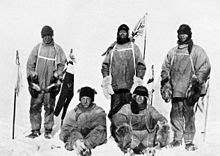1918 A
young soldier Harry Underwood returned to the front after being injured in
action. He felt bad again and was sent to the military hospital.
The next
morning, he was dead after gasping for air, chocking and his skin turned grey.
It is assumed that he was one of the first victims of the Spanish Flu which
costs 100 million lives the world over.
The
pandemic spread rapidly across Europe, USA, China and India, just to name a few
of the countries.
In looking
back, it was one of the worst medical catastrophe and claimed more victims than
any others in history.
The most
baffling point was for the medicals that it struck down the fit and healthy men
and women. Since the World War I was still raging it did not get the full
attention.
The
pandemic of the 1918 influenza claimed more victims then the whole World War 1.
It seemed unstoppable and there was no cure for it. People started to wear
facemasks which seemed to only way to hopefully prevent catching it.
Flu has a
long history and date back to Roman and Greek times. The word influenza was first
mentioned in 1500 by Italians describing an illness they thought being “influenced”
by the stars.
Today’s flu
is nothing in comparisons to the outbreak in 1918. There was no country being
spared. To matter worse because of an even second outbreak in the autumn. It
was so bad that people collapsed in the street and bled from lungs and noses
which suffocated them. Children starved to death because parents were so ill they
could not care for them. Undertakers had not enough coffins to bury the dead.
Scientists
studied the 1918 influenza thought they traced the outbreak to the camp in
Etaples, France. It was the camp where farmer’s son from Kent Harry Underwood age
20 died.
At the end
of 1917 men were crammed in the camp and the flu went through like wild fire
but the virus was suspected to come from animals or birds kept for food.
Adding to
it was the war which had huge army movements plus the resistance of men was
very low because of the terrible conditions in the trenches.
As usually,
the authorities were slow in trying to stop spreading by organising isolations.
In those days influenza was thought it is a bacteria, not a virus.
News announced
that Spain is badly affected and therefore the label “Spanish Flu” sprang up
and it stuck.
In Britain
Whitehall did not see the point to introduce quarantine on trams and buses or
close theatres for fear to lower morals. As always, their disorganisation let the
flu spread quicker and further.
To prove
the point, Manchester had a lower death rate because Dr James Niven, the city’s
medical officer, did establish quarantine rules.
On the
contrary, in Newcastle, mines and docks nearly ground to a standstill because
70 per cent of workers fell ill.
The German
army was also affected by 150,000 men in summer of 1918. If you like to call it
a blessing; it could have brought an earlier end to the war.
The last
death in the year 1918 was William Leefe Robinson, 23, who won a Victoria Cross
being the first pilot to shoot down a Graf Zeppelin.
Armistice Day
celebration brought everyone out on the street which could have ignite another
pandemic but fortunately it didn’t.
Scientists
now know it was a H1N1 strain related to the avian flu.
The
question remains, can it happen again despite medical advances, communications
and vaccinations? There is no doubt the danger is still there.






.jpg)

